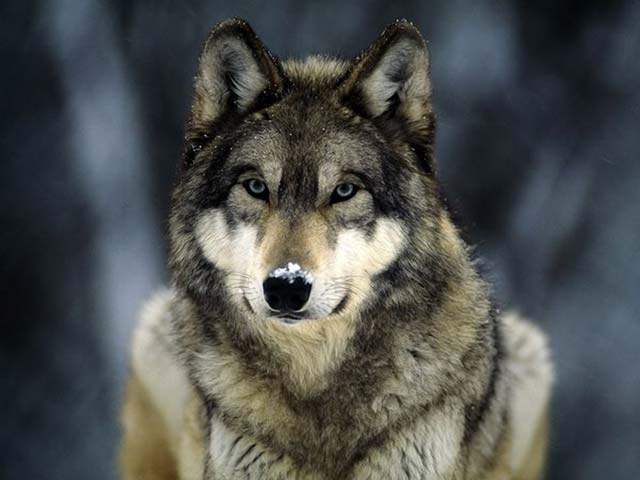
Tails of the West – Wolves
By: Tell Tail Bart
Have you ever had a close encounter with a wolf before? I sure have. Hi my name is Tell Tail Bart and today I will be educating you on the grey wolf (Canis Lupis) for my first ever Tails of the west blog.
Starting off with the appearance and other attributes, the grey wolf has long shaggy fur and tail, since it lives in the wild you can’t expect a nice groomed puppy. It can run up to 31-37 miles per hour and weighs about 110 pounds as an adult. Grey wolves are meat eaters which means they need big fangs and teeth, infact that is one area where wolves and dogs are very much alike. So if you ever want to see what wolf fangs look like, I do not recommend hunting down a real wolf to see, you probably won’t live, but if you do, minus a few limbs. Instead if you have a dog, look at it’s teeth. Or just use the internet.
Next you might be wondering, how do wolves react to people. Well, usually wolves shy away from humans but on rare occasions wolves do attack. In North America only 2 people had been reported killed by Wolves in 2014. Wolves cause trouble when they eat farm animals, so that means farmer have to kill them so they can save their farm. Five hundred and forty wolves were killed by farmers last year. There is a 1 in 2 million chance of being killed by a wild animal bears, elk, snakes etc. But this does not means animals like wolves will not attack.
Grey wolves were once common throughout all of North America but were exterminated in most areas of the United states by the mid 1930’s, I often wonder why. Today, their range has been reduced to Canada, Alaska, the Great Lakes, Northern rockies and the pacific northwest. Thanks to reintroduction of wolves in 1995, Yellowstone National Park is one of the most favored places to see and hear wolves in their native habitat. Wolves require large areas of contiguous habitat that includes forest and mountain terrain. Mexican gray wolves can thrive in desert and brush in the southwest. Suitable habitat must have sufficient access to prey, protection from excessive persecution and areas for denning and shelter.
Does your family have a dog? Then you live with a relative of the North American grey wolf. Grey wolves and dogs, belong to the same family of animals called the canidae. Wolves been around way longer, giving the dog slowly time to evolve from the wolf. Some wolves, believe it or not, were companions to humans long before the dog. Though wolves and dogs have a lot in common, there are also big differences. Dogs have been domesticated and are most of the time friendly, wolves live in the wild. People consider dogs as man’s best friend. And I do, too, having owned a dog.
Wolves live in packs or families. A wolf pack usually consist of 5 to 10 members. They hunt together, eat together and live together. The father wolf or alpha wolf, leads the pack. His female mate is the mother wolf of the pack. Mother and father wolves usually stay together for life and raise pups, or offspring. The pups stay with the pack for a few years before leaving to start a pack of their own.
Wolves are carnivores like I said before. Wolves hunt animals in order to survive. But wolves aren’t picky eaters, they will eat carrion, which is decaying animals. When it’s time to eat, the alpha wolf gets first choice of the meat, followed by the mother wolf. Then the other pack members and offspring fight for what is left. The animals, wolves usually hunt are smaller animals like beaver, mice, muskrats, rabbits, squirrels etc. But sometimes wolves go for bigger dinner, like deer, and sometimes bear cubs, though wolves would rather not get involved with a momma bear.
And that there concludes wolves, and my first ever Tails of the West Blog.
Thank you for reading!
-Tell Tail Bart
